Feeding garlic with yeast
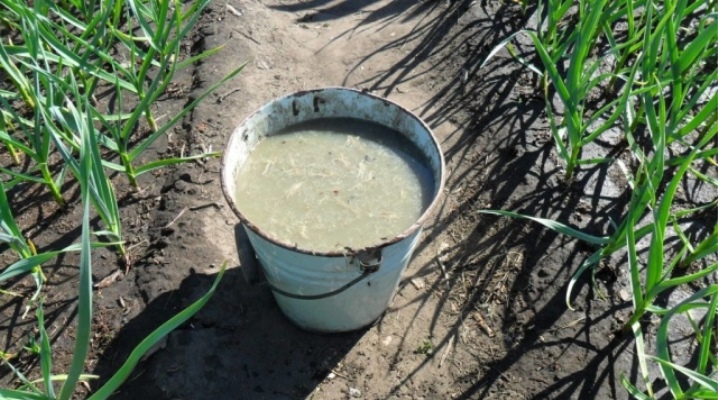
Our grandparents also actively used yeast nutritional supplements when growing garlic in the open field. They are popular today as well. Fertilizers made from yeast contain many beneficial bacteria - they contribute to the full growth and development of garden crops.
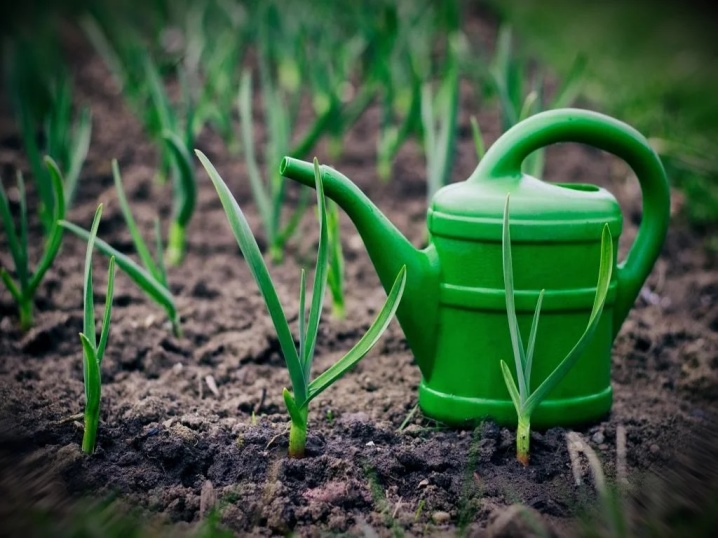
Properties
Yeast is a single-celled fungal microorganism, when in contact with liquid media, they multiply intensively and give plants many useful substances. Depending on the type of yeast and external factors, the composition and structure of the microflora may vary. They usually include proteins, carbohydrates, fats, vitamins, in addition, useful trace elements - nitrogen, potassium and phosphorus.
The benefits of yeast feeding are obvious.
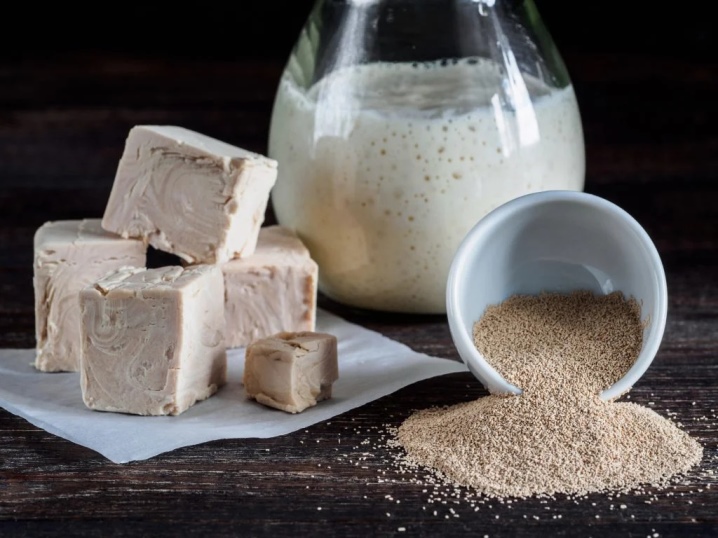
Watering garlic with yeast-based solutions promotes increased root formation. Thanks to the high nitrogen concentration, accelerated growth of green feathers is stimulated.
Bushes become strong, stems resilient and strong.
Yeast provides additional nutrients.
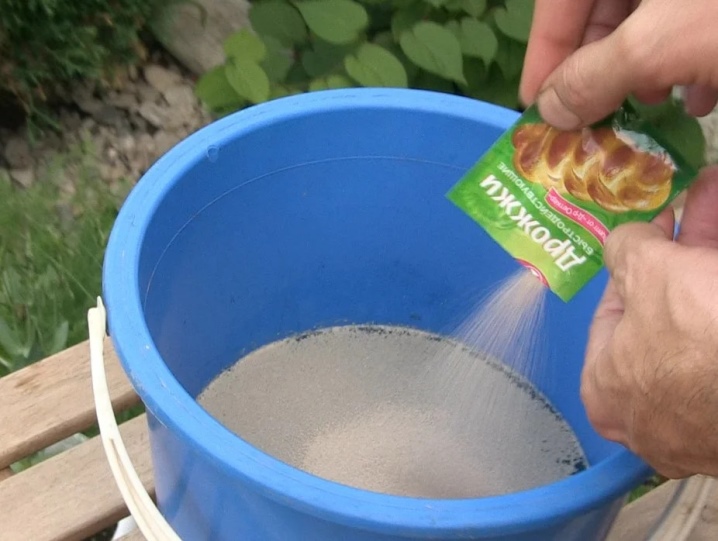
The beneficial effect of yeast is more pronounced on soils where compost, humus and other organic matter were previously introduced. Such a substrate creates an optimal environment for the vigorous activity of soil microorganisms. On contact with organic substances, they produce a lot of phosphorus and nitrogen. Bacteria accelerate the decomposition of elements, which leads to an increase in the quality of the microflora of the earth.
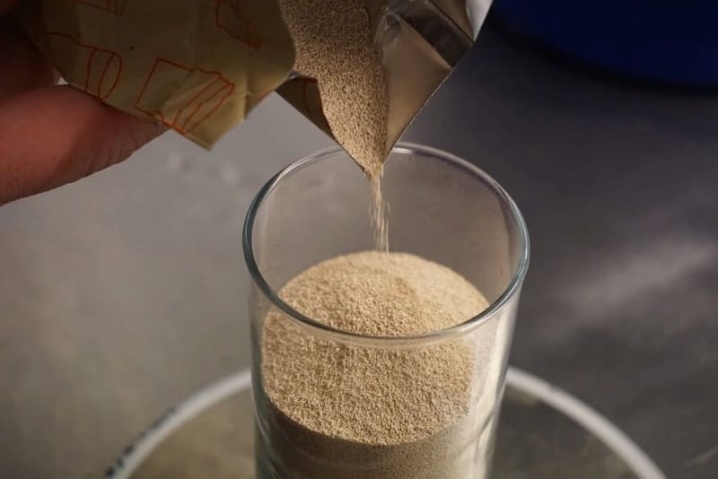
However, it should be borne in mind that regular feeding of garlic with yeast leads to a lack of potassium in the soil. Therefore, they must be alternated with potassium-calcium compounds - most gardeners and gardeners use wood ash for this.
For fertilizing garlic, yeast can be taken both in powdered and fresh form. In addition, you can find granular, baker's and brewer's yeast on sale.
It is not recommended to make a nutritional composition from an expired product.
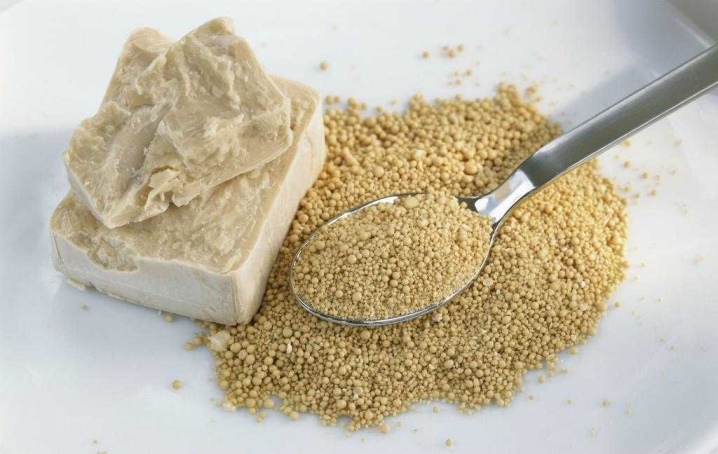
There is an opinion that if the yeast is subjected to temperature changes during preparation (for example, placed in a freezer), then this will not have a significant effect on spicy plants. This is not true. You are working with living microflora, and exposure to cold or heat can lead to the loss of their beneficial qualities. In addition, the usefulness of the product decreases when the yeast interacts with other organisms. To prevent this from happening, you need to store the yeast at room temperature in a hermetically sealed bag.
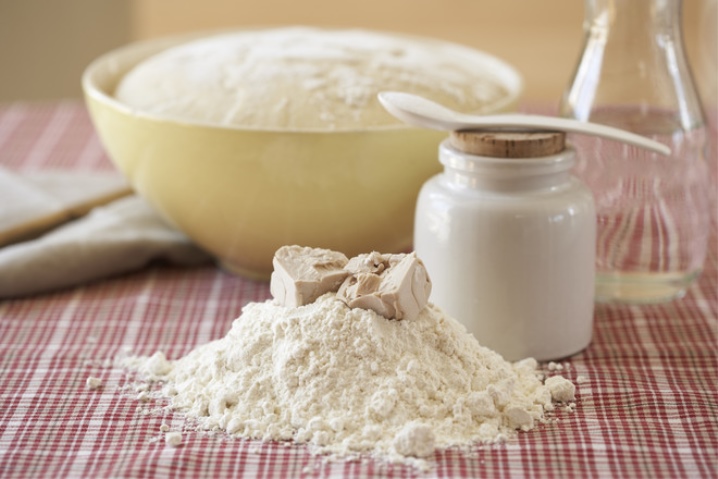
Cooking recipes
There are many recipes for feeding garlic with yeast infusion. They can contain various additional ingredients such as sugar, water, bread, or organic extracts. In any case, the beneficial bacteria start fermentation and the release of nutrients into the soil. Even novice summer residents will not have to spend a lot of effort to make fertilizer for a garlic culture. Here are the most effective recipes.
-
Dissolve 150 g of fresh yeast in filtered or rain water, put in a warm place for a day. Fertilizer is applied at the rate of 1 liter per square meter of the sown area.
-
Dry yeast in an amount of 10 g is dissolved in a small volume of heated water, and 100 g of sugar is poured there. Stir thoroughly, bring the volume to 80 liters, let it brew for 5-7 hours. To water a garlic bed, the resulting composition is diluted with water in a ratio of 1: 5.
-
In a 200-liter barrel, 3 buckets of meadow grass, 2 buckets of non-seeded weeds, 2 kg of bread and 1.5 kg of baker's yeast are placed. Pour 2⁄3 soft water, no more, because during fermentation the liquid begins to increase in volume. The container is half covered with a lid, allowed to ferment for about a week. As soon as the foam head disappears from the surface of the liquid, the concentrate is ready. Before use, it is diluted with water at a rate of 1: 5. According to experienced gardeners, this fertilizer is saturated with minerals, nitrogen, growth stimulants, as well as beneficial bacteria, fungi and acids. By its action, this mixture is comparable to such drugs as "Zircon", "Epin" and "Heteroauxin".
-
In 5 liters of heated water, dissolve 1 tbsp. l. dry yeast, add 100 g of sugar and one pack of crushed ascorbic acid. A glass of garden soil is also brought there, allowed to brew in a warm place for a couple of days. The resulting uterine concentrate is diluted with rainwater in a ratio of 1 liter per bucket, used for leaf and root irrigation.
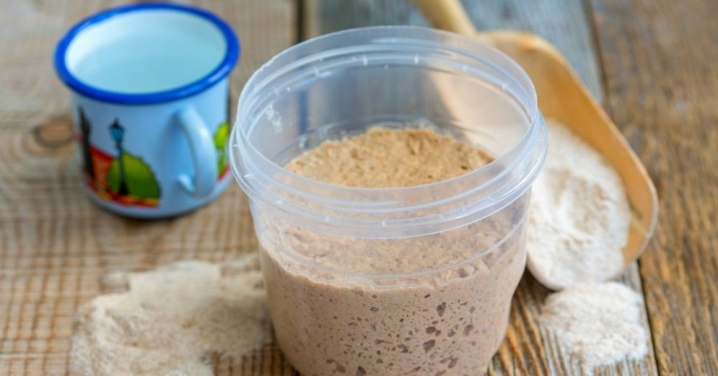
How to feed?
In the spring, as soon as the first green shoots appear, it is necessary to start feeding. For for a feather of garlic to become green, lush and juicy, it needs a mild yeast fertilizer. Such dressings help to strengthen the roots of the plant, and its vegetative part becomes thick. This top dressing is best done in May, when the average daily temperature is at least +15 degrees, and the earth is warmed up for fermentation. Before processing, the soil is thoroughly loosened and irrigated with water, only after that fertilizers are added. Immediately after such feeding, green feathers grow intensively.

The second feeding is carried out in the last days of June, at the beginning of July, when the vegetative parts of the garlic plant are already sufficiently developed. Root feeding gives the greatest effect at this stage. The yeast composition should be applied exactly under the root, avoiding contact with the feathers. If the green parts are still affected, spray the bushes with plain water 3-4 hours after applying the top dressing. This will protect the feathers from a negative reaction when exposed to the yeast mixture.

For the third time, the plant needs yeast at the time of the garlic heads formation. At this stage, the roots of the plant actively absorb nutrients from the soil. If the land is depleted, then you cannot count on a good harvest. This is why nutritional supplementation is so important for a garlic crop.
Garlic is fed with yeast no more than 3 times per season. When fertilizing, it is important to observe the dosage, since an excess of the nutrient mixture leads to the opposite result - the plants begin to wither, and the heads remain small and unformed.
See the next video for feeding garlic with yeast.













The comment was sent successfully.